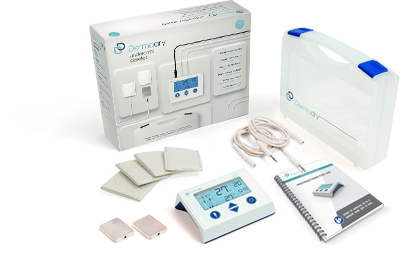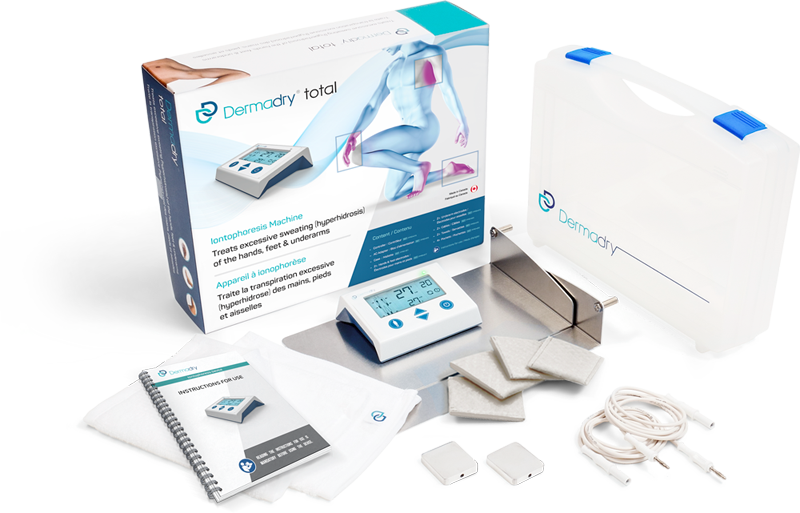Everything you Need to Know about Sweat
Dermadry Team
Sweating, also known as perspiration, is an essential bodily function that helps regulate body temperature.
Sweat Glands
There are two types of sweat glands in the human body, known as the eccrine and apocrine sweat glands. The apocrine glands develop in relation to hair follicles and secrete a concentrated fatty sweat that is responsible for body odor. Eccrine sweat glands, on the other hand, secrete what is essentially a diluted sodium chloride solution with trace amount of other plasma electrolytes that is odorless. There are approximately 2-4 million sweat glands on the body. While the apocrine sweat glands are present in few numbers in localized regions across the body, the eccrine glands are present in large numbers all over the body, making them responsible for regulating body temperature.
Why do we sweat?
While sweating is a necessary daily function, certain scenarios and activities make us sweat more, such as when we are exercising, stressed, sick, exposed to hot temperatures, or consuming spicy foods. The segment of the brain responsible for temperature control is the hypothalamus, which acts as the body’s thermostat. It responds to a situation by sending signals to the sympathetic nervous system, which then stimulates the eccrine sweat glands to secrete water to the skin’s surface. It then cools the body through a process called evaporative cooling.

Sweating is also part of the human fight-or-flight response, which is why we tend to sweat in stressful situations, such as prior to an exam, job interview, presentation, or first date. In this case, the cause is adrenaline, which stimulates muscle activity and causes blood vessels to widen, which increases body heat and triggers the sweat response. Eating spicy foods can also trigger this same neural response in the brain, which activates temperature receptors that respond to increased heat.
When we are sick, the hypothalamus detects infections and tells the body to generate and retain more heat, thus producing a fever, which can result in sweating, among other symptoms. This increase in your overall body temperature is a protective mechanism that makes your body less inhabitable to infectious agents.

Medical Conditions Related to Sweating
In these aforementioned scenarios, sweating is a completely normal bodily response to various internal and external factors. The amount of sweat we produce each day depends on a variety of factors, including temperature and our activity level. However, if there is no recognized cause or trigger to the sweating, then it can signal an underlying condition. Both sweating too much and too little can be categorized as the medical conditions known as hyperhidrosis and hypohidrosis, respectively.
Hypohidrosis/Anhidrosis
Hypohidrosis is characterized by diminished sweating in response to appropriate stimuli and is the result of poorly functioning sweat glands. Causes range from skin conditions and injuries to dehydration and nerve disorders. It is a less severe form of anhidrosis, which is generally characterized by the complete absence of sweating. The body’s inability to produce a normal amount of sweat can be extremely dangerous as it increases the risk of overheating, leading to life-threatening complications such as hyperthermia and heat stroke.
Hyperhidrosis

The opposite of this condition, and more common of the two, is hyperhidrosis, a medical condition characterized by excessive sweating that affects up to 5% of the global population. Those who suffer from this condition can sweat 4-5 times more than the average person. Essentially, their sweat glands do not shut off and are always switched “on”, meaning that they sweat in circumstances that don’t call for it.
While this condition is non-life-threatening, its psychological, emotional, and social impacts are substantial. The condition can take a significant toll on its sufferer, leading them to live and plan their life around the condition, even leading them to avoid social interaction and situations. It is often referred to as the “silent handicap”, as people rarely talk about the condition nor seek medical help, leaving many to suffer in silence. There are a lot of misconceptions about hyperhidrosis — in fact, many sufferers don’t even realize that excessive sweating is a recognized, treatable medical condition. Fortunately, highly effective treatment is available. At Dermadry, we have made it our mission to spread awareness about the condition and available treatment.
Click here to learn more about iontophoresis as a highly effective, non-invasive treatment option for hyperhidrosis so you can start living a sweat-free life! If you're ready to make the change, discover our iontophoresis machine product line below!























